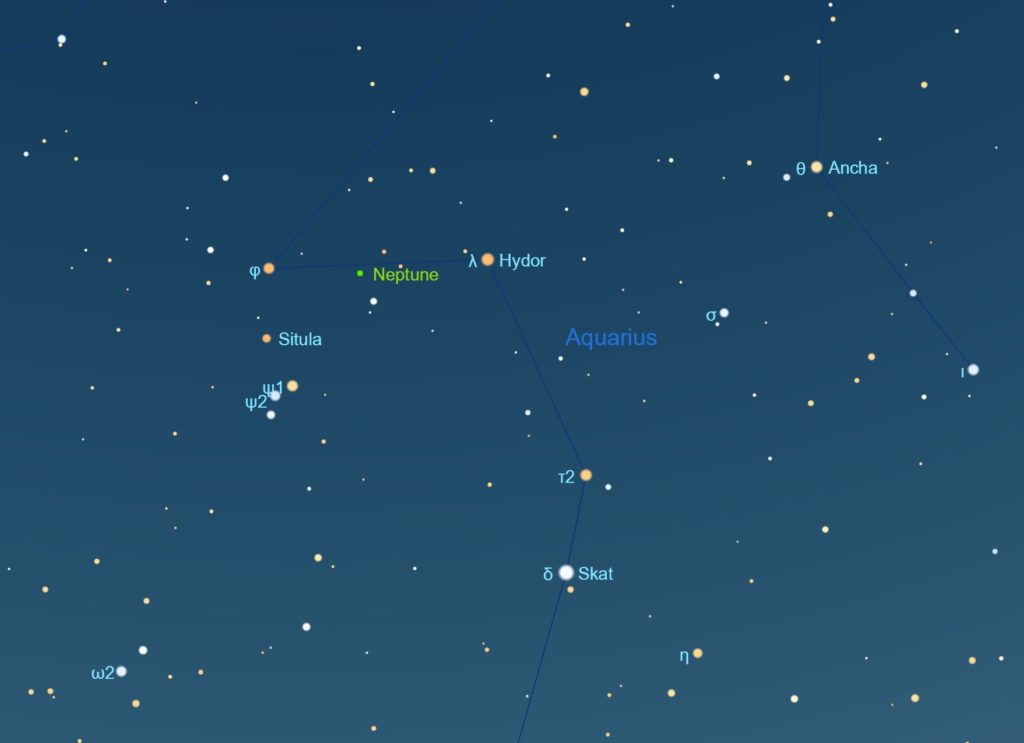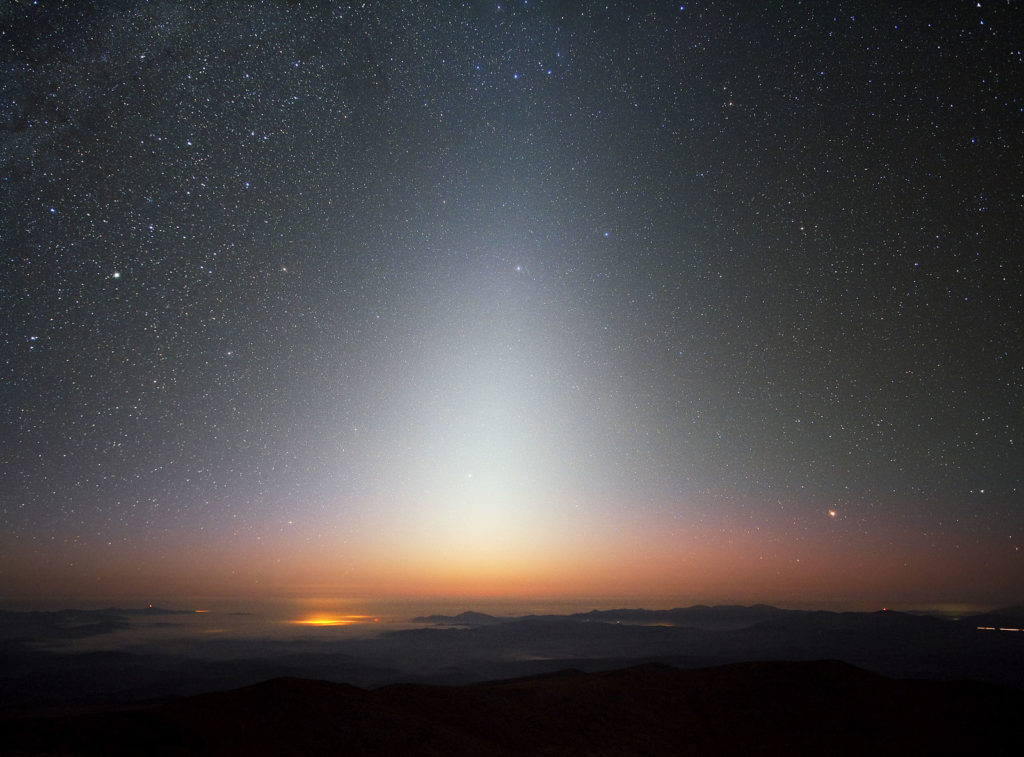The zodiacal light as seen from La Silla, Chile (credit: ESO).September’s arrived, and that means stargazers have a final few weeks to see the long, starry arc of the Milky Way and all its attendant splendor. The rich constellations of Scorpius and Sagittarius are moving westward, but the lengthening nights keep these stars accessible for a little longer, at least for observers in the northern hemisphere. In the east, the relatively star-poor constellations of Pegasus, Capricornus, and Piscis Austrinus are moving into view along with hundreds of galaxies accessible with a small telescope. Also in September, a string of bright planets from Venus in the west to Mars in the southeast remains visible to liven up the sky. Here’s what to see in the night sky this month…
September 1. A lovely array of bright planets has been visible for months now, and September begins with Venus low in the west after sunset along with the bright white star Spica less than a degree away. Moving eastward along the ecliptic you see Jupiter, Saturn, and final Mars in the east or southeast after the Sun sets. Take them all in and enjoy the sight, with or without a telescope.
Sept 1. At magnitude -2.1, the planet Mars continues to dazzle in the southeastern sky after the Sun goes down. As the month begins, Mars is still close enough to Earth to reveal surface detail in a small telescope in steady sky. The dust storms that obscured the surface in July and August have mostly passed, and diligent observers and imagers have reported seeing more detail in good conditions. But don’t wait. The planet will begin speeding away from Earth as September wears on, and its brightness will drop by a factor of two by month’s end.

3 Sept. Last Quarter Moon, 2:37 UT.
Sept. 5. Over the next couple of weeks, northern-hemisphere observers who have very dark sky can see the zodiacal light in the eastern sky about 90-120 minutes before sunrise in the northern hemisphere. This whitish glowing wedge of light appears to thrust upward from the horizon (see image at top of page). The zodiacal light, sometimes called the “False Dawn”, is simply sunlight reflected off tiny dust particles in the inner solar system.

Sept. 6. Mercury returns, this time to the morning sky, where it appears today just a finger’s-width north of the bright star Regulus in the constellation Leo in the east-northeast.
7 Sept. Neptune reaches opposition today. This blue-green ice giant, the most distance major planet from the Sun in our solar system, shines at magnitude 7.8 and spans an apparent diameter of 2.4″. Its tiny disk is visible in the constellation Aquarius between the stars Hydor (λ Aquarii) and phi (φ) Aquarii. While the planet is plenty bright enough to see with a telescope, or even binoculars, resolving its disk requires some magnification, at least 75x to 100x. The planet’s disk gets larger with more magnification while the images of the stars do not. Visually, the planet has a very pale blue-green color.


9 Sept. New Moon, 18:01 UT
10 Sept. Saturn reaches its stationary point, and from now onwards it begins its slow prograde motion eastward against the background stars of the constellation Sagittarius. The planet is more than two months past opposition, but it’s still a beautiful sight in a telescope.
13 Sept. A waxing crescent Moon joins Jupiter and the star Alpha Librae (Zubenelgenubi) to form a small equilateral triangle about 4 degrees on each side.
15 Sept. The nearly first-quarter Moon makes an appearance with Jupiter, Saturn, and the star Antares above the southern horizon (and nearly overhead for deep-southern stargazers).
16 Sept. First Quarter Moon, 23:15 UT
19 Sept. The Moon hangs about 4 degrees north of Mars.
21 Sept. Venus reaches its greatest illuminated extent. The planet shines at a shockingly bright magnitude -4.8, as bright as it ever gets. However, the magnificence of the planet is tempered by its relatively low position in the evening twilight over the western horizon. Southern-hemisphere observers will get a better view as the planet appears somewhat higher above the horizon.
23 Sept. The Sun crosses the celestial equator going south at 01:54 UT. That marks the beginning of autumn in the northern hemisphere and spring in the southern hemisphere. At equinox, the Sun is at a point on the ecliptic just west of the star Porrima (gamma Virginis), about halfway between the stars Regulus and Spica.
25 Sept. Full Moon, 2:52 UT
